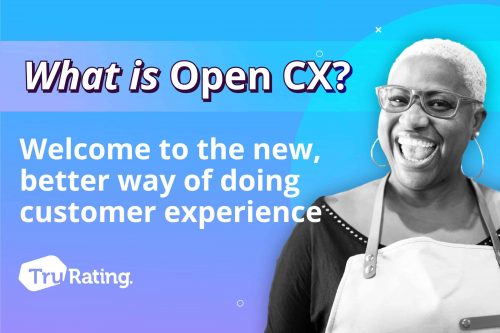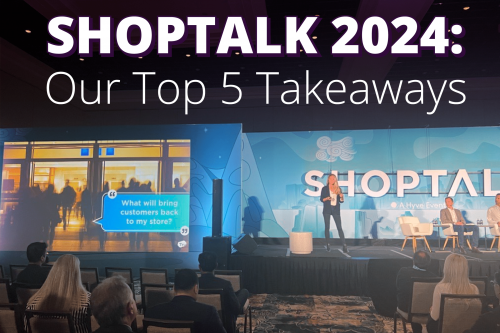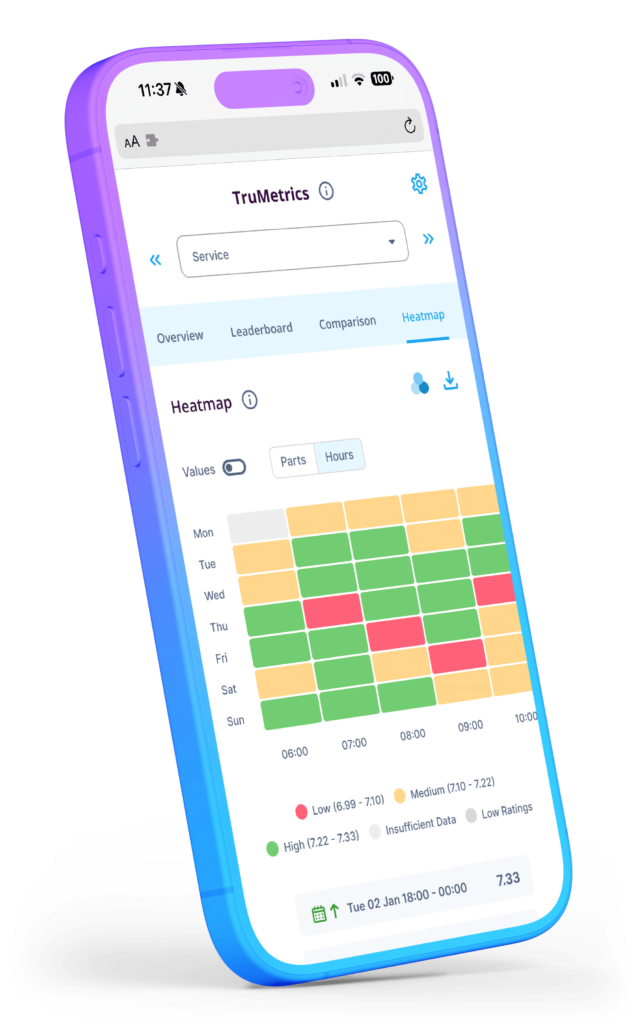A recent report by Bain & Company contained the somewhat shocking statistic that while 80% of businesses believe they provide a ‘superior proposition’ only 8% of their customers agree.
For those in the retail business, this highlights one of the key challenges facing the industry today – how to close the gap between the service you think you’re providing and your customers lived experiences.
The evidence is there to show that a well-executed CX strategy really is one of the key drivers for the ‘holy trinity’ of customer spend, loyalty and advocacy, but actually implementing an approach that works for your business can be a complicated endeavour.
To help you make the leap from theory to practice, we’ve collected a series of insights from some of the best minds working in customer experience today. Practical tips that you can start to put to work right now, or at the very least, use as inspiration for your future CX adventures.
Jeanne Bliss – Get Deliberate
For five-time Chief Customer Officer Jeanne Bliss, taking a deliberate approach to customer experience is key: “What is the memory you want to imprint on your customers? Are you hiring the right people and behaving the right way to make those moments?”
In a world where up to 80% of Gen-Z shoppers prefer to shop in-store, but often turn to online for convenience sake, it’s up to retailers to find ways to draw shoppers into their doors. By focusing on the tangible elements of your customer experience (our data indicates that outstanding service is a key driver here) you can connect with your customers in a truly ‘meaningful’ sense, without necessarily requiring a huge output in terms of costs.
Tip: Every interaction with a customer provides an opportunity to create an ambassador for your brand – be deliberate in your efforts to empower your staff so that they can make decisions that are right for your customers and business both.
Jeremy Watkin – Be Part of the Solution
Jeremy Watkin, thought leader and co-creator of the Customer Service Life Blog, believes everyone is responsible for the customer experience: “Before we start beating the drum, let’s roll up our sleeves and be part of the solution. This means that whatever your level in your organization, you can start improving the CX right now.”
Whatever the size of your business, individuals should be given the chance to shine. A shift manager at one our partner merchants, noticed a dip in scores for product and service scores across the evenings in his busy urban location. After an inspection of the floor, it became clear that stock and staffing issues were affecting the customer experience. Through a few simple measures – reshuffling the staff schedule and ensuring product layouts remained consistent across the day – he was able to achieve a 22% increase in satisfaction with a 12% associated increase in customer spend.
Tip: ServiceChannel recently reported two-thirds of customers have walked out of stores because they were messy or disorganised. Investing in a tool that helps measure service standards at the individual and store level can help you to avoid basic, but costly, mistakes.
Shep Hyken – Convenience is King
For New York Times best-selling author Shep Hyken (The Convenience Revolution), the businesses that will lead the way tomorrow, are those that make it easy to shop with them. To truly please your customers, you have to focus on ‘innovation that makes life more convenient for them’.
The rise of “Click & Collect” is one example of a recent retail trend, born as a result of businesses adapting to the needs of the modern consumer. While overcoming limited retail space can pose a challenge in terms of fulfilment pressures, for those who can get it right, it’s been shown to be a winning formula. UK retailer Next was able to see off the challenges of an increasingly difficult market, largely in thanks to its Click & Collect program, which grew by 15% following a strategic investment in fulfilment capabilities.
Tip: Investment in operational capabilities like fulfilment can be just as important as the more obvious front-line aspects of your customer experience. If you can anticipate your customers’ needs, it makes the choice to do business with you a much easier one.
Nate Brown – Voice of the Customer is Key
Nate Brown, Director of CX at UL EHS Sustainability and co-founder of CX Accelerator, warns that in today’s environment, “Competition is too fierce to be asleep at the experience wheel”. For Brown, the missing bridge from theory to action is the “Voice of the Customer” (VoC). Without having an accurate tool in place to help listen to and react to customer response, it can be hard to know if you’re focusing on the right priorities.
Retail Prodigy Group (master franchisee holders for Nike in Australia and New Zealand) utilized VoC technology to help them do just that. By measuring the impact of a series of relatively simple service standards – asking for a customer’s first name, offering multiple product selections, smiling at checkout – the retailer was able to clearly demonstrate their value to staff, increasing compliance, and shortly thereafter revenues, in one fell swoop.
Tip: A Voice of the Customer tool can help you to make informed strategic decisions for your business. When looking at providers, it’s important to consider both measuring customer satisfaction and the associated revenue opportunities.
Brian Dennis – Show the ROI of your Initiatives
For Brian Dennis, former VP Customer Experience at Kohl’s, one of the greatest challenges facing professionals today is the challenge to secure executive support for customer experience initiatives, “All the time and effort spent planning and designing a CX program will be for nought without an ROI that meets similar criteria to other areas within the business.” While trusted sources like the Forrester Customer Experience Index have shown that incremental CX performance can be worth millions of dollars in revenue, external evidence isn’t always enough to make a business case.
Working with a large discount-retailer, we helped the operations team to deliver quantifiable proof that the cost of additional training to special ‘Service Champions’ was a worthy investment. By providing a simple framework to measure the impact of their efforts (and a clear projected long-term ROI) a once seemingly complicated decision, became much simpler.
Tip: If you can clearly tie your initiatives to revenue opportunities, it becomes much easier to earn support for CX goals with executive teams. Be prepared to justify your ambitions at both a customer and business level!
____________________
No matter the size of your budget or team, there is never a wrong time to think about the ways you can implement CX best practices into your day to day operations.
Tools like TruRating, provide a simple and effective way to both manage and prove the value of your initiatives. If you would like to discuss how we could help you to get the most out of your CX strategy for the year ahead, we’d love to hear from you.
Email us at [email protected] or visit our book a demo to learn more.














